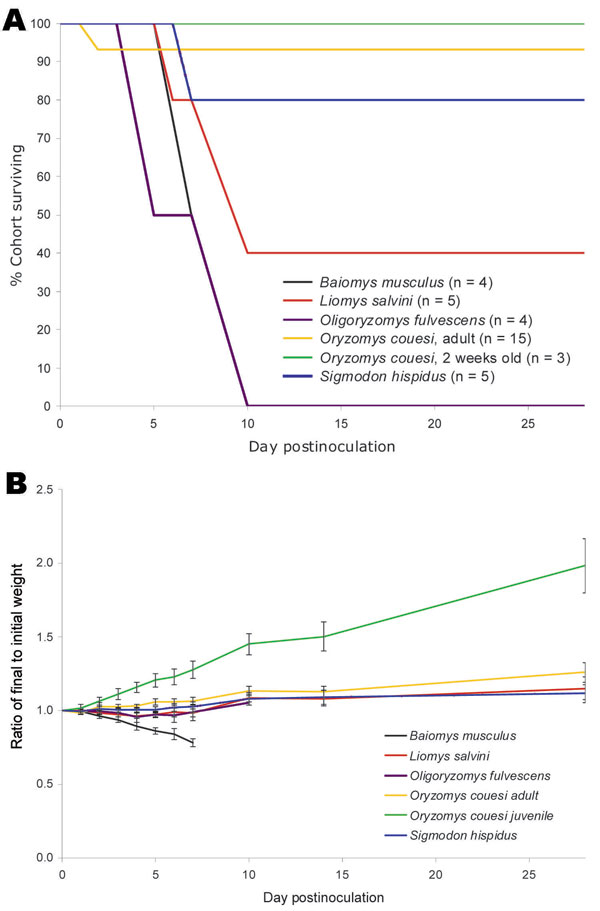Volume 15, Number 4—April 2009
Research
Experimental Infection of Potential Reservoir Hosts with Venezuelan Equine Encephalitis Virus, Mexico
Figure 1

Figure 1. Survival rates and weight change of wild rodents from Chiapas, Mexico, after experimental infection with 3 log10 PFU of Venezuelan equine encephalitis virus subtype IE, strain MX01-22. A) Survival rates. Black and yellow lines represent animals whose brains yielded live virus after necropsy. Red, green, blue, and purple lines indicate animals whose death was attributed to manipulation and/or stress, not to VEEV infection. B) Weight change. Mean cohort weight (grams) divided by mean cohort starting weight (day 0). Weight gain or loss was used as an indicator of disease. Only Baiomys musculus rodents showed weight loss during acute infection. Data for days 42 and 66 (not shown) did not differ significantly from that for day 28. Error bars indicate SEM.